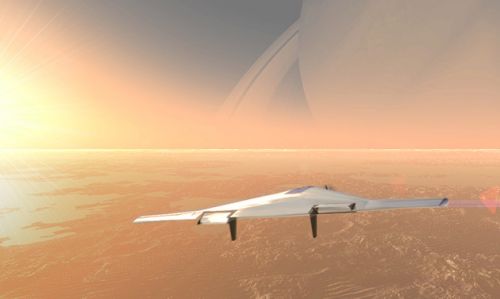Inflatable Aircraft for Flying in the Atmosphere of Venus
Engineers from the aerospace firms Northrop Grumman and L’Garde are developing an unmanned inflatable aircraft that could fly around the skies of Venus for up to a year.
With a combination of powered flight and passive floating, the vehicle, known as the Venus Atmospheric Maneuverable Platform, or VAMP, is designed to collect information about our neighboring sister planet.
A carrier spacecraft would drop the VAMP into the atmosphere of Venus, where it inflates to have a 151 foot wingspan, and enter a cruising altitude of somewhere between 34 and 43 miles above the surface using propellers and floating.
The data collected by VAMP would be sent back to scientists on Earth through the carrier spacecraft in Venus’ orbit.
Although the aircraft is still in development, Northrop Grumman’s Kristen Griffin is quoted as saying: “There are no major technology unknowns. It really is something that could be developed when the scientific community is ready for it.”
The VAMP would make orbits of Venus approximately every six days for up to a year before it became deflated, and the mission would come to an end.
If the technology is successful, it could be applied to aircraft capable of maneuvering other planet’s or moon’s atmospheres.
Source: GeoBeats News
Read More: SpaceNews.com & Space.com
– The Future of Aviation
– The Future of Moon Exploration
– The Future Of Mars Exploration
– Asteroid Mining
– Space Future

| Tweet |











